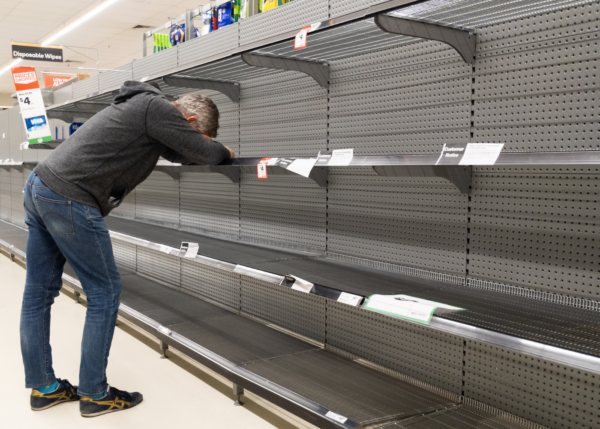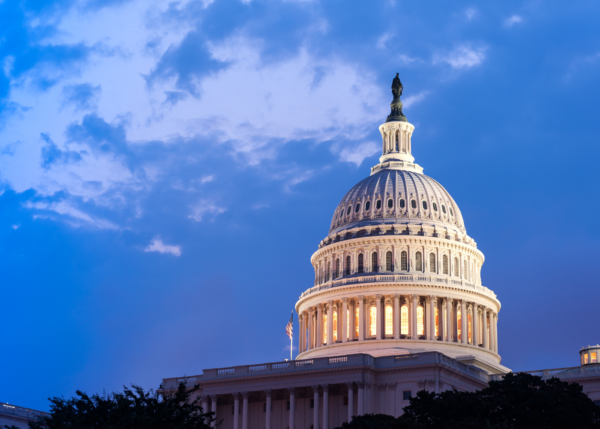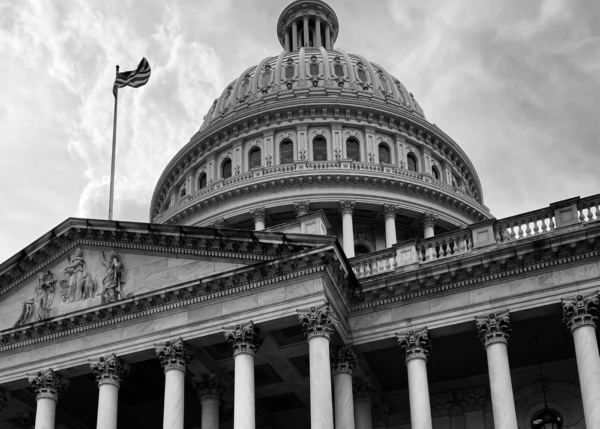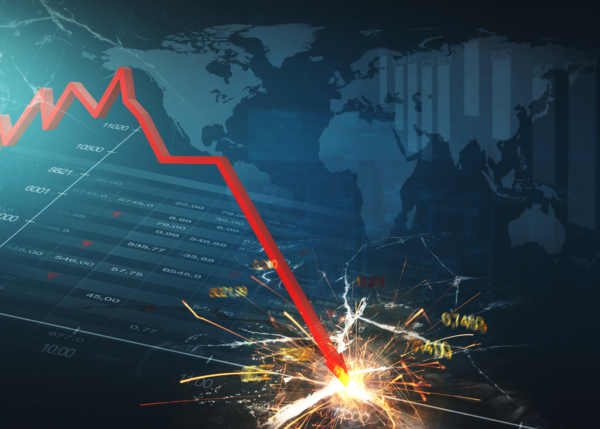FACT: Alarm clocks, baby strollers, battery-powered sex toys, and thermos bottles may vanish from American stores by the end of May.
THE NUMBERS: Year-on-year drop in container arrivals at Port of Los Angeles –
| May 2024 / May 2025* | -33.0% |
| February 2008 / February 2009 | -32.6% |
| March 2019 / March 2020 | -30.9% |
* Comparing scheduled container cargo arrivals for April 27 to May 17, 2025, with actual cargo arrivals in May 2024.
WHAT THEY MEAN:
Here’s the Treasury Secretary Mr. Bessent in March, advocating higher tariffs and lecturing his audience: “Cheap goods are not the essence of the American dream.”
Since then the Trump administration has released a turbid stream of extra-Constitutional “emergency” and “national security” decrees raising tariff rates, mixed with amendments to these decrees to raise rates higher, exempt some goods, or change policy for particular countries. They are complex and frequently change (as with yesterday’s complicated rewrite of the March auto decree). But taken together, and as of this week, they basically leave a tariff rate of 10% for almost all goods (with exceptions for many Canadian and Mexican products and energy), plus the 1.4% average for the permanent, Congressionally authorized tariff system, and 145% on most Chinese-made goods (with exceptions for smartphones and some other IT goods). One result of all these sudden new costs: per press reports, a group of retail CEOs informed the administration a week ago that Americans may start seeing “empty shelves” as early as mid-May. In more specific terms, as the prices of many foods, most clothing and shoes, back-to-school goods, and much else rise, a swathe of cheap and popular mid-range home goods — blenders and alarm clocks, umbrellas and strollers, sex toys and toasters — might vanish altogether.
Here’s why:
A 10% tariff means higher prices, but (as we noted in the case of toasters last summer) probably won’t much change production or trade patterns. The 145% tariff on Chinese goods, by contrast, will often act more like an embargo. A striking New York Times visualization last Sunday (subs. req.), built around the image of a house, suggests the likely impact by reporting the Chinese share of American imports for dozens of home goods: 10% or lower for rugs, mattresses, TVs, and cars; 20%-50% for metal shelves, refrigerators, washers and driers; 90% and above for thermos bottles, microwave ovens, and umbrellas; a 99% peak for alarm clocks and, well, toasters.
Official data on the real-world impacts of all these decrees — trade flows, prices, employment, growth — will flow in slowly over May and June. Some early clues, though, come from the “Port Optimizer” system run by the Port of Los Angeles, which offers near-future forecasts of container-ship arrivals. It predicts 17 ships carrying 83,351 containers* this week, 14 ships carrying 71,520 containers next week, and (a bit more optimistically) 18 carrying 89,917 containers the week after that. Compared to May of 2024, this suggests container arrivals have dropped by 30% to 35%. This would rival or possibly exceed the 32.6% year-on-year fall in February 2009 (after the 2008 financial crisis) and the 30.9% drop in March 2020 as the U.S. economy closed during the COVID-19 pandemic as the steepest decline of the 21st century.
The Port’s cargo figures also hint at where this drop is fastest. It handled $112 billion worth of incoming imports from China last year — a third of its $333 billion in total cargo traffic, and about a quarter of the $439 billion in all U.S. goods imports from China. With the 10% global tariff likely to raise prices and reduce but not end trade, and the 145% tariffs on most Chinese goods after the April 2 decree making many goods prohibitively expensive, the Port Optimizer’s vessel-arrival forecasts — which mirror press reports on plummeting April ship departures from China — likely show a steep plunge in arrivals of Chinese-made home goods.
What would this mean in practice? Overall, China’s share of U.S. goods imports last year was a large but not overwhelming 13%. (In dollars, $439 billion of $3.295 trillion.) As the Times visualization shows, though, China’s share imports is highest in consumer goods, and for some small home appliances exceeds 90%. A quick twelve-product table, with some products used in the Times piece (though using “quantity” rather than “value” shares) and others from our own files:
| Product | Value | Quantity (total) | Quantity (China) | Chinese Share | Alternative sources |
| Alarm clocks | $50 million | 11.49 million | 11.43 million | 99% | Taiwan |
| Battery-powered sex toys | $450 million | 45.0 million | 43.6 million | 97% | Korea, Germany |
| Baby strollers | $392 million | 5.68 million | 5.45 million | 96% | Vietnam |
| Microwave ovens | $1.40 billion | 19.7 million | 18.5 million | 95% | Malaysia, Thailand |
| Hair dryers | $406 million | 23.8 million | 20.9 million | 88% | Cambodia |
| Clarinets | $35 million | 96,200 | 66,200 | 67% | Indonesia |
| Blenders & juicers | $744 million | 45.0 million | 38.4 million | 85% | Mexico |
| Toothbrushes | $289 million | 1.24 billion | 755 million | 61% | Germany, Vietnam |
| Hammers | $111 million | 21.15 million | 10.30 million | 49% | Mexico |
| Ball-point pens | $481 million | 2.75 billion | 1.28 billion | 47% | Japan, Mexico |
| Vacuum cleaners | $2.98 billion | 63.6 million | 22.2 million | 35% | Vietnam |
| Razors | $482 million | 1.47 billion | 210 million | 14% | Mexico, Greece |
These are just the sort of “cheap goods” Mr. Bessent dismissed in March: kitchen gadgets, low-priced clocks, baby goods, personal care products and simple tools, musical instruments, and so forth. The razors, vacuum cleaners, hammers, and pens at the bottom of the table will likely cost more in the coming weeks and months but stay on the shelves. The clocks, sex toys, strollers, and microwaves near the top, though, might not be available at any price.
So: Nationwide, Americans will be deciding over the next months whether Bessent is right. More personally and locally, if you’re looking to restock your kitchen, bathroom, bedroom, workbench, home office, etc. with small but useful things this year, do it now.
* Technically 83,351 “TEU”. The TEU, standing for “twenty-foot equivalent unit” is the standard measurement of container traffic. One TEU is one 20’ x 21’ x 8.5’ container, and a 40-foot container counts as two TEU.
FURTHER READING
PPI’s four principles for response to tariffs and economic isolationism:
- Defend the Constitution and oppose rule by decree;
- Connect tariff policy to growth, work, prices and family budgets, and living standards;
- Stand by America’s neighbors and allies;
- Offer a positive alternative.
Data:
The New York Times illustrates the Chinese place in American home goods.
The Port of Los Angeles’ container statistics, with monthly totals in TEUs since 1995 and annual totals since 1989.
… the Port Optimizer tracks week-by-week vessel and cargo arrivals.
… the Port’s “Facts and Figures” page.
And the U.S. International Trade Commission’s Dataweb.
From the administration:
Bessent dismisses affordable goods in March.
… and last week, National Economic Council Director Kevin Hassett says no chance of empty shelves, everything is under control.
Public reaction so far:
Public opinion probably won’t set hard until Americans get a few months’ experience of the tariffs’ real-world effects. The interim judgment, though, is bleak. Just as the Port Optimizer gives before-the-facts hints at actual cargo arrivals, data from seven major poll releases this past week — Pew, Fox News, Washington Post/ABC News, New York Times/Siena, CNN/SSRS, NPR/Marist, and Harvard’s Institute of Politics (of Americans under 30) — provides a snapshot of attitudes after the April 2 decree but before the real-life impact. We’ll look in more detail in a later Trade Fact, but the average across all six media polls has 60% of Americans “disapproving” of tariff increases while 36% “approve.” Among the individual polls, “disapproval” rates range from 55% to 65%, and “approval” from 33% to 40%.
And for HTS enthusiasts:
For Dataweb users, Harmonized Tariff Schedule codes for the 12 products in the table are:
82052000 for hammers;
821210 and 821220 for razors;
850811, 850819, and 850860 for vacuum cleaners;
8509400015 and 8509400030 for blenders and juicers;
851650 for microwave ovens;
851631 for hair dryers,
87150000 for strollers;
9019102020 and 9010102030 for battery-powered sex toys. We haven’t included non-battery options, not because of prudishness but because HTS does not give them their own lines, instead discreetly concealing them in general “other goods” lines in Chapters 39 and 40.
91051100 and 91051900 for alarm clocks;
9205904020 for clarinets;
96032100 for toothbrushes;
96082000 for ball-point pens.
ABOUT ED
Ed Gresser is Vice President and Director for Trade and Global Markets at PPI.
Ed returns to PPI after working for the think tank from 2001-2011. He most recently served as the Assistant U.S. Trade Representative for Trade Policy and Economics at the Office of the United States Trade Representative (USTR). In this position, he led USTR’s economic research unit from 2015-2021, and chaired the 21-agency Trade Policy Staff Committee.
Ed began his career on Capitol Hill before serving USTR as Policy Advisor to USTR Charlene Barshefsky from 1998 to 2001. He then led PPI’s Trade and Global Markets Project from 2001 to 2011. After PPI, he co-founded and directed the independent think tank ProgressiveEconomy until rejoining USTR in 2015. In 2013, the Washington International Trade Association presented him with its Lighthouse Award, awarded annually to an individual or group for significant contributions to trade policy.
Ed is the author of Freedom from Want: American Liberalism and the Global Economy (2007). He has published in a variety of journals and newspapers, and his research has been cited by leading academics and international organizations including the WTO, World Bank, and International Monetary Fund. He is a graduate of Stanford University and holds a Master’s Degree in International Affairs from Columbia Universities and a certificate from the Averell Harriman Institute for Advanced Study of the Soviet Union.











